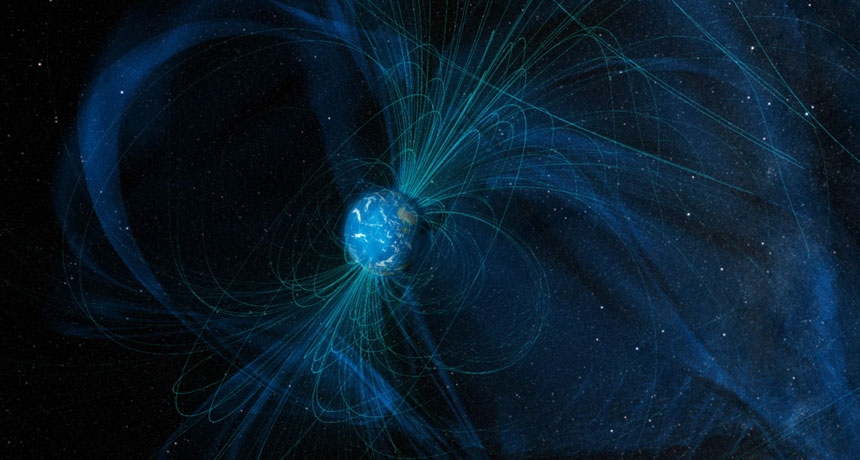Bizarre metals may help unlock mysteries of how Earth’s magnetic field forms
The dynamo effect that generates Earth’s magnetic pull could also occur in Weyl metals

MAKING MAGNETISM Earth’s magnetic field (illustrated) as well as those of stars and other astronomical objects are created by flows of electrically conductive substances. On smaller scales, such dynamos may also be created by materials called Weyl metals.
Goddard Space Flight Center/NASA







